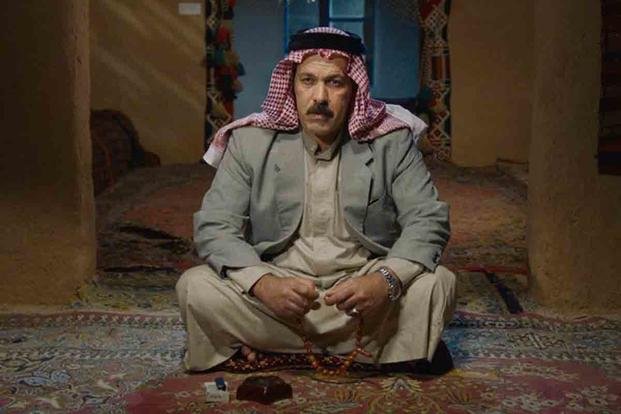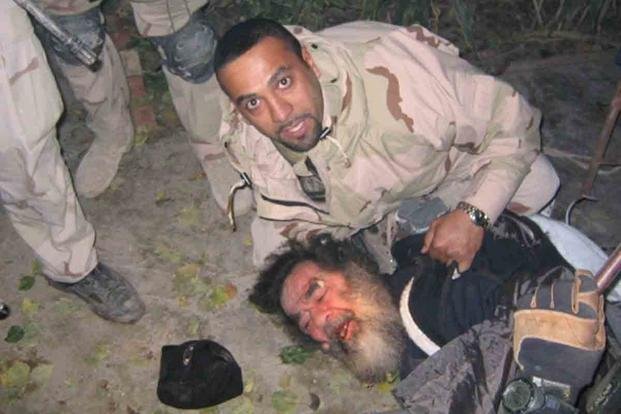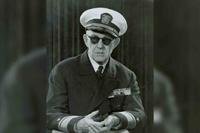In December 2003, Operation Red Dawn came to its planned conclusion: with deposed Iraqi dictator Saddam Hussein pulled from a "spider hole" near a farmhouse in Ad Dawr, Iraq, south of his hometown of Tikrit. His capture was a story nine months in the making after the American-led coalition launched its invasion of Iraq in March of that year. Hussein, of course, would spend the next three years incarcerated, awaiting his eventual execution.
Alaa Namiq -- the farmer who hid the dictator for those 235 days of 2003, dug the spider hole in which Hussein was captured and even served as the former president's personal hairdresser -- was also captured. He spent at least six months in the Army's notorious Abu Ghraib prison for aiding Hussein, according to a 2012 Washington Post article about Namiq's postwar life.
Halkawt Mustafa, a Norwegian-Kurdish journalist and filmmaker, read the Post's article about Namiq. He then spent the next decade telling the story of how an Iraqi farmer who knew little about Saddam Hussein came to hide him from 150,000 U.S. troops for the better part of a year. That story is now the documentary film "Hiding Saddam Hussein," which premiered Dec. 1, 2023, at the Red Sea International Film Festival in Jeddah, Saudi Arabia.
The last time Hussein appeared in public as president of Iraq was on April 9, 2003, the same day Baghdad fell to American forces. He was seen standing on top of a car hood, mobbed by loyal Iraqis for the last time since forcing his predecessor out of power in 1979.
In all that time, Namiq only ever saw the president on his one-channel television or heard his voice on state radio. The next thing he knew, Hussein was knocking on his door, asking for help.
"He came here and he asked us for help and I said yes," Namiq, now in his 50s, told The Washington Post. "He said, 'You might be captured and tortured.' But in our Arab tribal tradition and by Islamic law, when someone needs help, we help him."
"At that moment, the thought didn't cross my mind that 150,000 soldiers were looking for him," Namiq says in the trailer for the documentary film.
Though Namiq's farm was near Hussein's hometown and U.S. troops would certainly be looking for him in the area, the erstwhile president knew he'd be caught if he fled to family or friends. This farmer's home was just far enough away from Tikrit (and any Hussein family and friends) to give Hussein the chance to get away clean or start an insurgency to help him regain power. As time goes on, however, the likelihood of a pro-Saddam resurgence grows less likely. Hussein's sons Uday and Qusay are soon killed. The farmer and the president begin to strike up an unexpected rapport, and this interview-based documentary is filled with reenactments of their interactions.

"Hiding Saddam Hussein" doesn't try to humanize the dictator's brutal regime. It's still the product of a Kurdish filmmaker, whose people were frequent targets of Hussein's cruel violence. This includes the 1988 Halabja Massacre, where Iraqi forces used mustard gas on the Kurds, killing 3,000-5,000 and injuring up to 10,000 more. In fact, the movie isn't really about Saddam or his history; it's about the farmer forced to hide him.
It took a long time for Mustafa to track Namiq down, and he enlisted the help of local sheikhs in Iraq to finally locate the former farmer. Other journalists had attempted to get the full story, but Namiq felt comfortable talking to Mustafa on camera. Not only did he discuss the details of digging the now-infamous spider hole and his time with the dictator, but also of his arrest and time in Abu Ghraib.
"Hiding Saddam Hussein" is not yet in theaters. It is already being made into a dramatic feature film by David Seidler, the screenwriter behind the Academy Award-winning film "The King's Speech," according to The Hollywood Reporter.
Keep Up With the Best in Military Entertainment
Whether you're looking for news and entertainment, thinking of joining the military or keeping up with military life and benefits, Military.com has you covered. Subscribe to the Military.com newsletter to have military news, updates and resources delivered straight to your inbox.

















